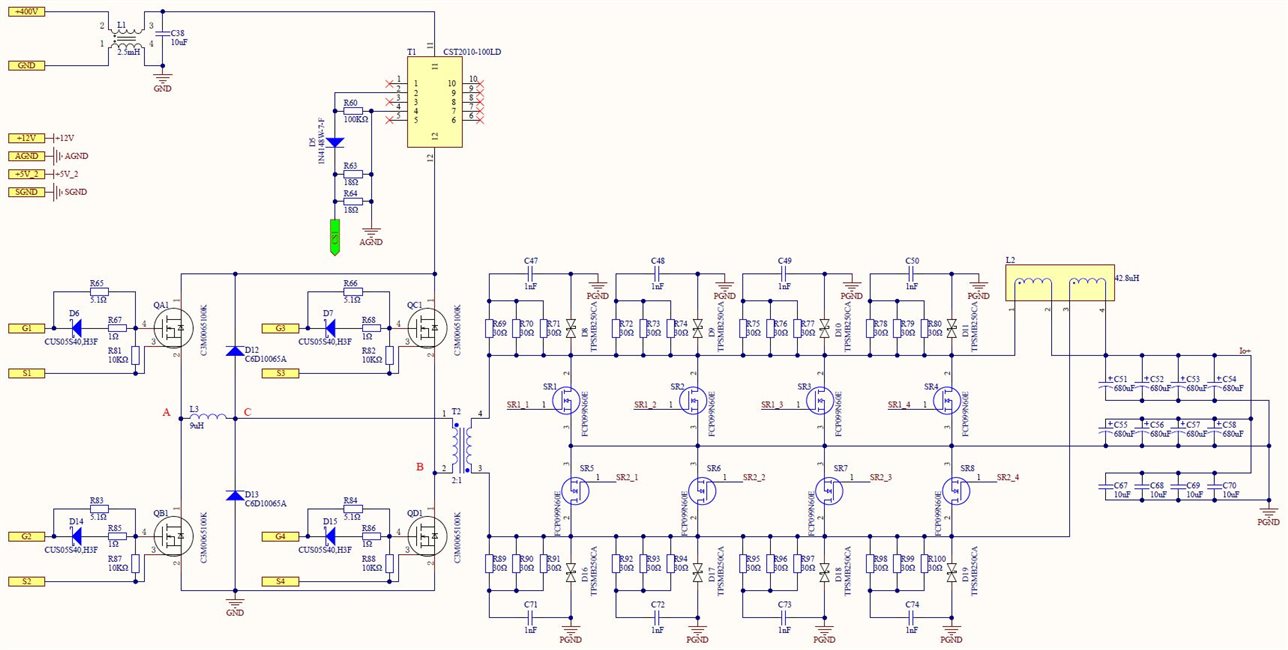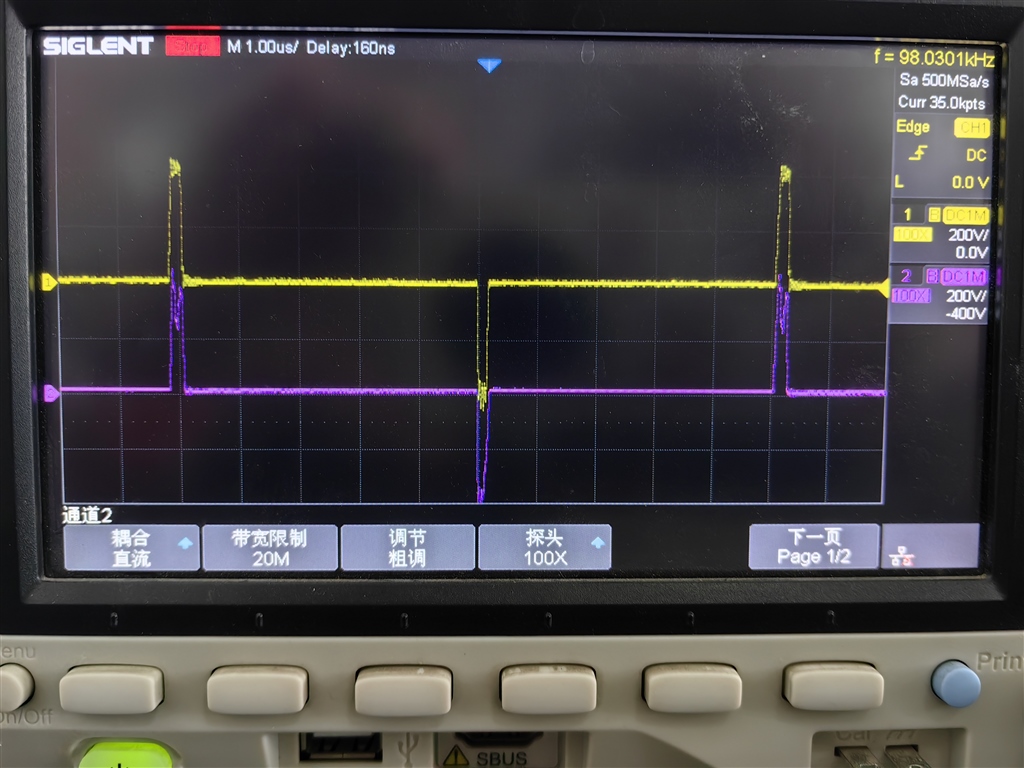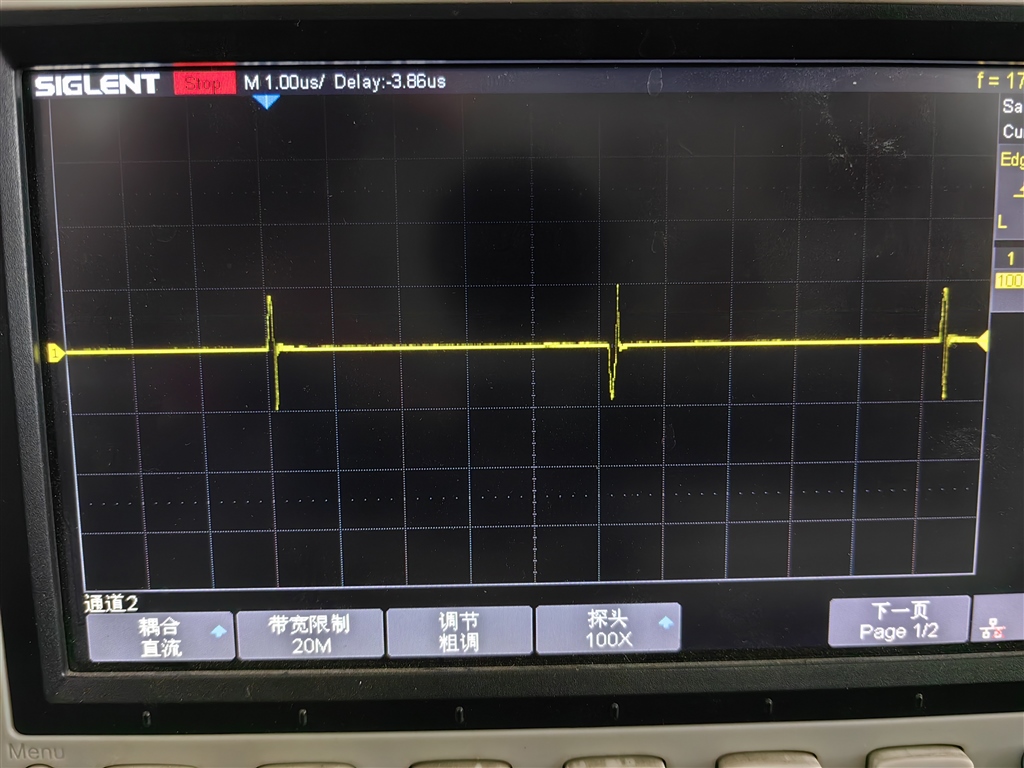Other Parts Discussed in Thread: UCC28951
Tool/software:
Hello,
I am designing a phase shifted full bridge circuit using the TIDA-020031 reference design, with an output voltage of 70V, a current of 45A, and a maximum power of 3000W.
The transformer turn ratio is 2:1, shim inductor is 9uH, the output inductance is 42.8uH, using a current doubling rectification scheme.
I disabled the E and F outputs of UCC28951 during testing.

The current problem is that the voltage of the shim inductor Uac almost follows the voltage of the midpoint of the bridge Uab, resulting in abnormal primary voltage of the transformer Ubc. The figure 1 shows the actual waveform tested, channel 1 (yellow) is Uab, channel 2 (red) is Uac. The figure 2 shows the waveform of Ubc. At the same time, the temperature rise of D12 and D13 is very severe.


I would like to know if there are any design errors and if UCC28951 is suitable for a 70V output DC-DC.
Please help me.

